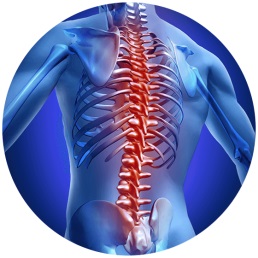Spondylosis Symptoms & Treatment Options
The spine is an integral part of our everyday life. The spine allows for movement, absorption of the forces created by this movement, and support for a vast majority of the upper body’s weight. Over time, these forces can cause wear and tear on the spine. “Spondylosis” is an broad term that is used to indicate the deterioration of joints, cartilage , ligaments and bone, and the pain associated with spinal deterioration.
The precise causes and symptoms of spondylosis can differ from person to person. For instance, spondylosis can occur because of arthritis, bulging or herniated discs, or joint degeneration. And, in reverse, spondylosis can also cause conditions such as herniated discs, arthritis, spinal stenosis and nerve compression.
Regardless of how your spondylosis occurs, it’s no secret that spondylosis can be excruciatingly painful and disruptive to everyday life. The good news is that there are several treatments and therapies that can deliver relief. The first step lies in diagnosing the precise cause of your pain.
Symptoms of Spondylosis
Because spondylosis is a broad-spectrum term that is used to characterize many different types of spinal degeneration, symptoms can vary significantly from person to person. The location on the spine, the source of the deterioration, and the severity of the pain will all determine how symptoms appear. Keep in mind that although spondylosis can occur in any part of the spinal column, this condition is most often detected in the cervical and lumbar spine, as these segments are more mobile and surfer from progressive daily wear and tear.
If you are experiencing any of these symptoms, please contact us to schedule an appointment.
Preventing Spondylosis
There many things that we do in our daily lives that can accelerate the speed of spinal degeneration or spondylosis. When we know what these accelerating factors are, we can take steps to address them and possibly even slow the spread of spinal degeneration. Although we cannot avoid time or gravity, we can alter our lifestyle choices, adopt precautions at work to protect our spine, and become more aware of our family history.
Lifestyle choices can play a prominent role in the deterioration of our spine… and the rest of our body, for that matter. It is important to take into account the amount and type of exercise in which we participate. Little to no exercise weakens the body’s muscles and tissues, leading to global deterioration. Excessively vigorous exercise can also have adverse consequences. Constant or “extreme exercise” can actually wear down the body’s tissues at an alarming rate, rather than benefitting the body.
Substances such as alcohol, tobacco, or unhealthy foods that promote weight gain can all negatively affect the health of the spine, leading to premature or accelerated degradation.
Family history can also be an important tool in planning for spinal health. If we know that we are susceptible to spondylosis from its presence in our immediate family, we can take protective measures to safeguard our spine. Talking to a medical professional before problems emerge may seem unnecessary. But, doing so can actually improve your lifelong spine health.
Below Is A Generalized List Of Possible Symptoms One May Experience:
- A dull ache to severe pain adjacent to the location of spinal degeneration and compression
- Radiating pain down the limbs as a result of the compression and inflammation of nerves
- Localized tingling, numbness, or ‘pins and needles’ sensations that radiate out to the limbs
- Localized stiffness or immobility in the muscles or joints of the back or muscular spasms
- Neurological effects such as headaches, dizziness, trouble balancing, and difficulty walking
- A loss of bowel or bladder control is a sign that immediate medical attention is necessary
More about Dr. Matin
Spondylosis Symptoms & Treatment Options
Spondylosis pain can be treated by Dr. Martin, give us a call to schedule an appointment.
We will provide different options of treatment.
Laminectomy
A laminectomy involves removal of tiny pieces of the lamina—the thin bony layer on the backside of each vertebra. When your surgeon removes a piece or all of the lamina, pressure can be removed from the spinal cord and nerves, allowing your pain to subside.
Microdiscectomy
A microdiscectomy is a minimally invasive procedure in which your surgeon removes pieces of the cushiony intervertebral discs. A microdiscectomy helps to relieve inflammation and pain.
Artificial Disc Replacement
A procedure consisting of removing a damage cartilage or disc to relieve nerve pressure or spinal cord compression, and replace your cartilage with a device that resembles normal function. Once healed it allows you to return to normal activities without restrictions.
Spinal Fusion
Many of the treatments that aim to relieve compression on the spine, such as laminectomies and discectomies, can leave the spine with less structural integrity. Spinal fusions involve the insertion of hardware or plates to create a stable spine as you recover.





